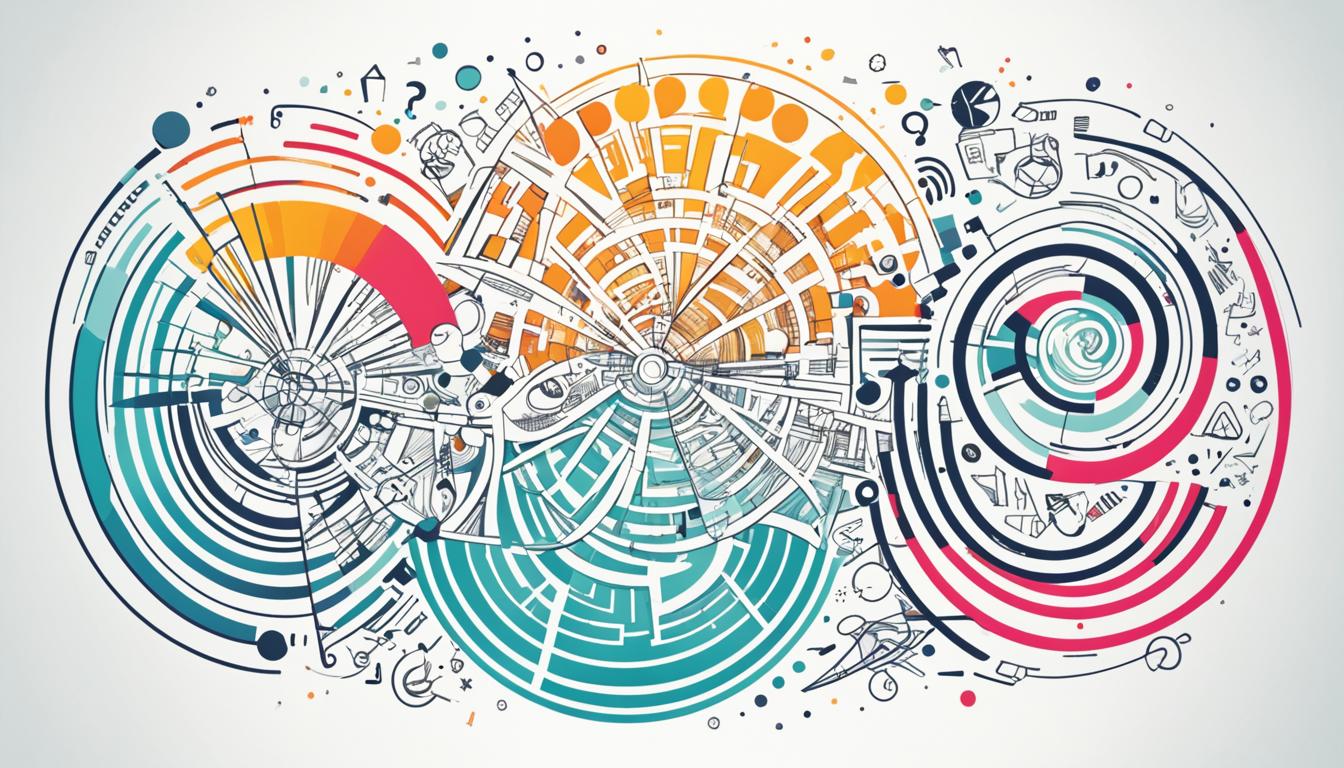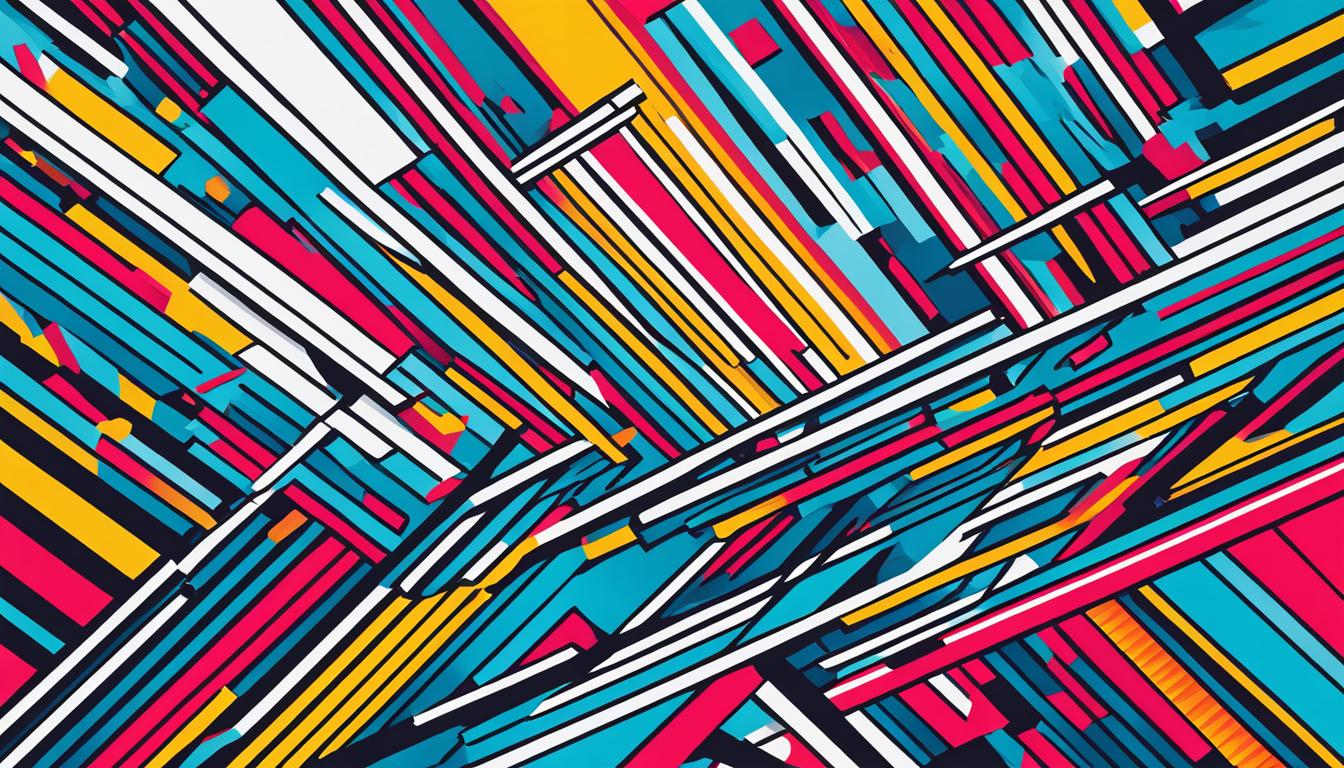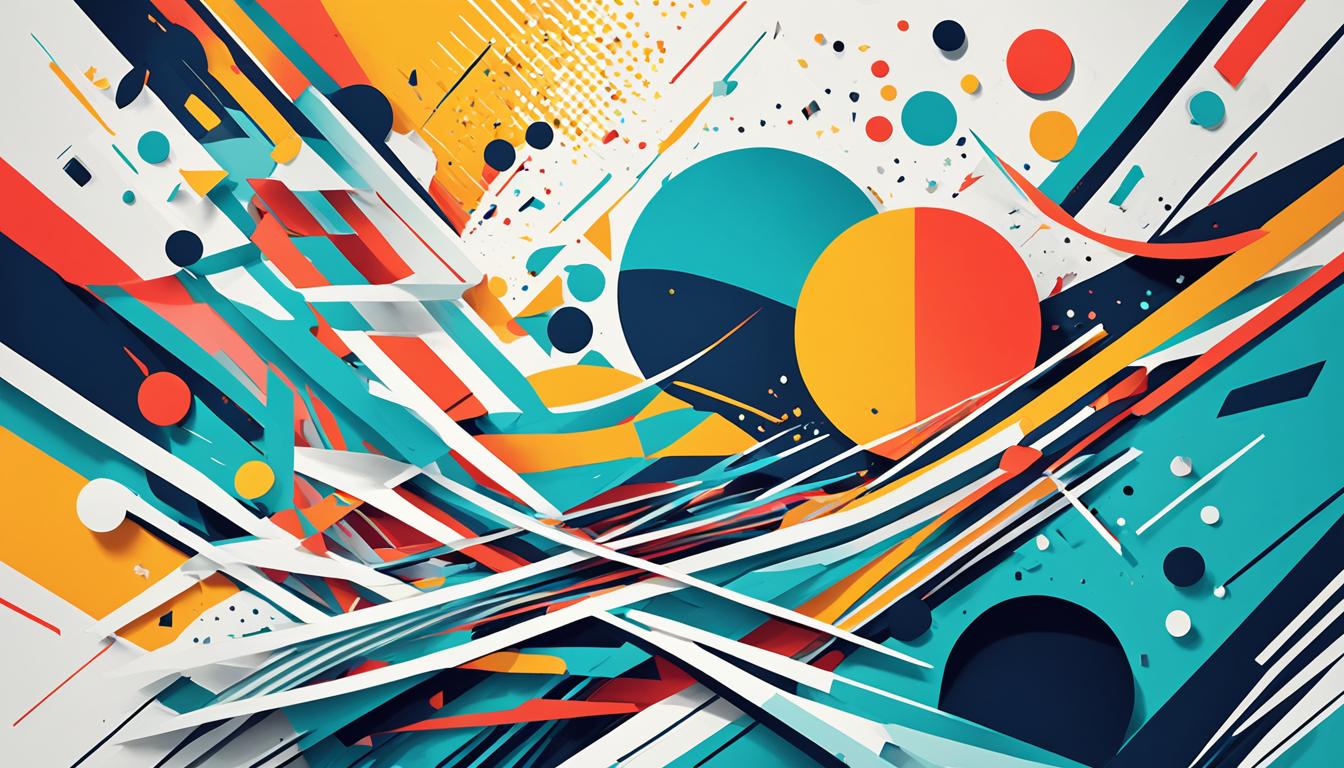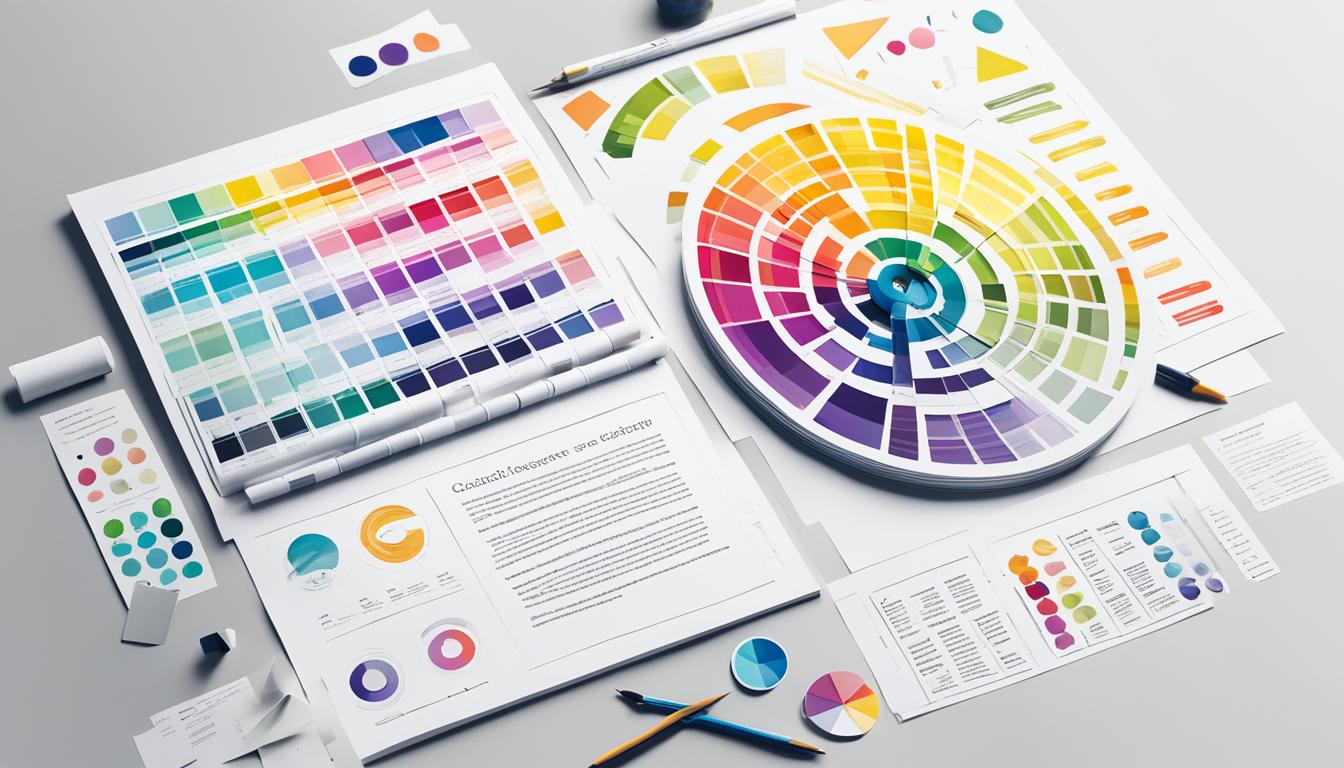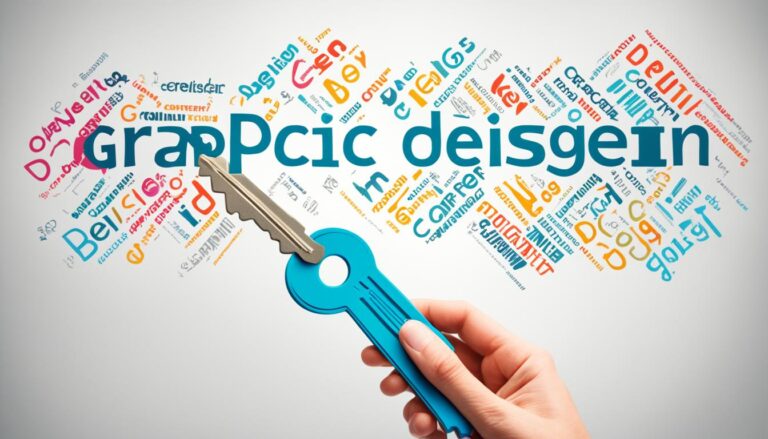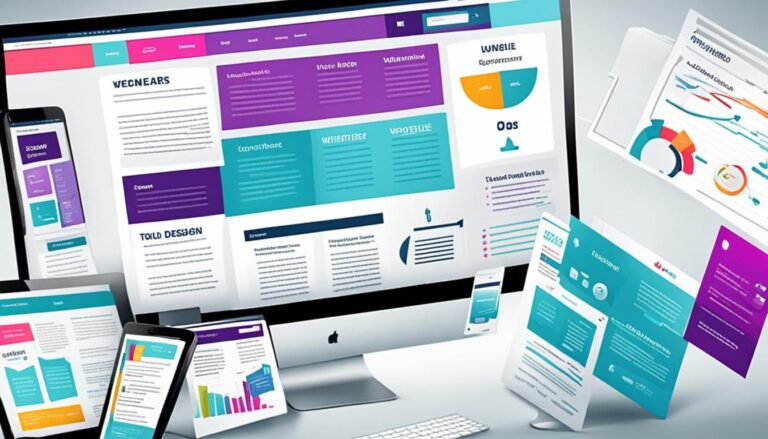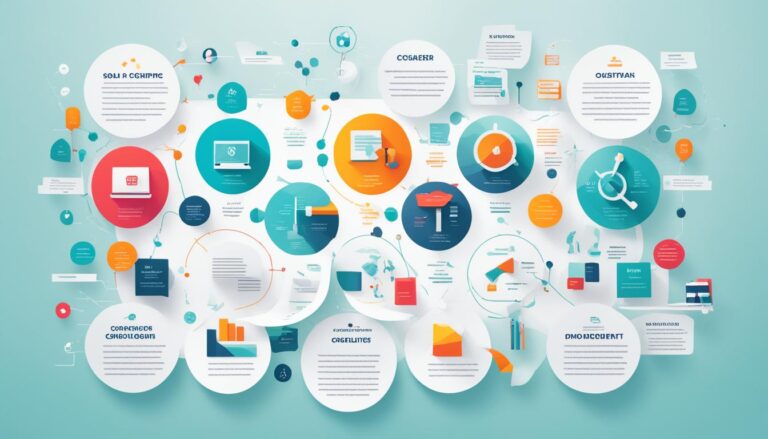Graphic Design Myths Debunked: Find the Falsehoods
Graphic design is a fascinating field that plays a crucial role in shaping our visual world. However, there are numerous myths and false beliefs about graphic design that often cloud our understanding of this dynamic profession. In this article, we will debunk these misconceptions and shed light on the truth behind graphic design.
From the notion that graphic design is solely about making things look pretty to the belief that expensive software is a prerequisite for success, there are various myths that hinder our perception of this multifaceted discipline. By debunking these false beliefs, we can gain a deeper understanding of the true essence of graphic design and the invaluable skills it entails.
In the following sections, we will explore four common myths surrounding graphic design:
- Myth 1: Graphic Design Is Just About Making Things Look Pretty
- Myth 2: You Need Expensive Software to Be a Good Graphic Designer
- Myth 3: Anyone Can Do Graphic Design
- Myth 4: Print is Dead; Digital is Everything
Through an exploration of these myths, we aim to provide a more accurate understanding of what graphic design truly entails and debunk the false beliefs that often overshadow its complexity and impact.
So, join us on this journey to unravel the truth behind graphic design and discover the real power it holds in visual storytelling, problem-solving, and effective communication.
Myth 1: Graphic Design Is Just About Making Things Look Pretty
One common myth surrounding graphic design is the belief that it is solely focused on aesthetics and making things look pretty. However, graphic design is a multifaceted discipline that goes beyond surface-level beauty. It is about effectively communicating messages, creating compelling visual narratives, and eliciting emotional responses through carefully crafted visuals.
Aesthetics certainly play a crucial role in graphic design, but they are just one aspect of the larger design process. Designers also employ various techniques to tell stories visually, capturing the essence of a brand or concept and engaging their audience. By skillfully combining typography, color schemes, layout, and imagery, graphic designers create a visual language that conveys the intended message and evokes specific emotions.
“Graphic design is a powerful tool for visual storytelling. It enables us to communicate complex ideas and connect with people on a deeper level through compelling visuals.”
Visual storytelling is a fundamental aspect of graphic design. It allows designers to convey narratives, evoke empathy, and establish meaningful connections with their audience. Whether it’s through an attention-grabbing poster, a thought-provoking infographic, or an immersive website design, graphic designers harness the power of visuals to convey messages and captivate viewers.
By debunking the false belief that graphic design is solely about making things look pretty, we can gain a deeper appreciation for its true value in visual storytelling and effective communication.
Examples of Visual Storytelling in Graphic Design:
| Design | Description |
|---|---|
| A captivating poster that uses bold typography, vibrant colors, and striking imagery to visually narrate the journey of a space exploration mission. | |
| An infographic that tells the story of climate change through a series of impactful illustrations, data visualizations, and concise text. | |
| A website design that immerses visitors in a virtual tour of a museum, using interactive elements, animations, and audio to enhance the narrative. |
Myth 2: You Need Expensive Software to Be a Good Graphic Designer
There is a common myth that to excel in graphic design, you need to invest in expensive software and tools. While renowned graphic designers often use software like Adobe Creative Cloud, it is essential to debunk the belief that it is the only pathway to success. The truth is, there are numerous alternative software options available that are more affordable or even completely free. Choosing the right graphic design software depends on your specific needs and budget.
Investing in expensive tools does not guarantee superior design skills or creativity. Instead of focusing solely on the tools, aspiring graphic designers should prioritize developing their design skills and nurturing their creativity. Mastering design principles, understanding composition, color theory, and typography are all crucial aspects of becoming a proficient graphic designer. By honing these skills, graphic designers can create visually stunning and impactful designs, regardless of the software they use.
Although Adobe Creative Cloud is a popular choice among professionals, various alternatives cater to different design needs and budgets. Some notable software includes:
- GIMP: A free and open-source software comparable to Adobe Photoshop
- Inkscape: Free vector graphic editor akin to Adobe Illustrator
- Canva: Intuitive web-based design tool suitable for beginners and non-designers
- Gravit Designer: A versatile vector design tool available for free
These software options allow individuals with limited financial resources to access powerful design tools and learn valuable design skills.
“Design is not just what it looks like and feels like. Design is how it works.” – Steve Jobs
Steve Jobs’ quote emphasizes the significance of design beyond the tools used. It emphasizes that design is not merely about creating visually appealing graphics but also about functionality and user experience.
| Software | Cost | Features |
|---|---|---|
| Adobe Creative Cloud | Subscription-based | Extensive features, industry-standard software |
| GIMP | Free | Image and photo editing, customizable interface |
| Inkscape | Free | Scalable vector graphics, text editing, and manipulation |
| Canva | Freemium | Easy-to-use interface, pre-designed templates |
| Gravit Designer | Free with optional premium features | Powerful vector editing, cross-platform compatibility |
Myth 3: Anyone Can Do Graphic Design
Many people mistakenly believe that anyone can do graphic design because they think it is an easy task. However, graphic design is a complex craft that requires a unique blend of skills, including a deep understanding of design principles, color theory, and design software. While there are resources available to learn graphic design, it still takes time, practice, and creative intuition to master the field.
Graphic design goes beyond simply creating visually appealing designs. It involves problem-solving, effective communication, and strategic thinking. Designers need to consider various factors such as target audience, brand identity, and user experience when creating impactful designs.
The Complexity of Graphic Design
Graphic design is not just about arranging elements on a canvas; it is about creating meaning and conveying messages through visual storytelling. Designers must have a solid foundation in design principles such as layout, typography, and composition. They need to understand how color psychology affects perception and how to use imagery to evoke emotions.
Moreover, graphic designers must be proficient in design software to bring their ideas to life. Tools like Adobe Photoshop, Illustrator, and InDesign are commonly used in the industry. However, becoming skilled in these tools requires time and practice.
Graphic design is a process of problem-solving through visual communication. It requires not only technical skills but also a keen eye for detail and a deep understanding of human psychology.
Mastering graphic design is an ongoing journey. Designers must continually hone their skills, stay updated with industry trends, and push their creative boundaries to stand out in a competitive field.
| Skills Required for Graphic Design | Software Proficiency | Creative Intuition |
|---|---|---|
| Understanding of design principles | Proficiency in design software | Ability to think outside the box |
| Knowledge of color theory | Experience with Adobe Creative Cloud | Effective problem-solving |
| Typography and composition skills | Familiarity with industry-standard tools | Attention to detail |
Myth 4: Print is Dead; Digital is Everything
It is a prevalent belief that print design is dead, and digital design is the sole medium that holds relevance. However, it is essential to recognize that both print and digital design have their unique strengths and can coexist harmoniously. While digital design has experienced rapid growth, there remains a significant demand for printed materials and analog mediums.
Experts predict a resurgence of analog methods as a means to combat digital fatigue and differentiate from the constant noise in the digital world. While the impact of digital content cannot be denied, there is value in the tactile experience that print design offers. It allows for tangible interactions, evokes emotional responses, and fosters a deeper connection with the audience.
“Print design allows for tangible interactions, evokes emotional responses, and fosters a deeper connection with the audience.”
In a world inundated with digital stimuli, print design can provide a refreshing break, offering a sense of authenticity and permanence. Research has shown that print materials are more memorable, enhancing brand recognition and recall. Additionally, print design allows for creative exploration of various textures, finishes, and layouts, creating impactful visual experiences.
While digital design offers unparalleled reach and interactivity, it is essential not to overlook the enduring power of print. Print materials can be leveraged strategically in a digital age, complementing online campaigns and creating cohesive brand experiences across multiple touchpoints.
Benefits of Print Design:
- Memorability and brand recognition
- Tactile experiences and emotional connections
- Creative exploration of textures and finishes
- Integration with digital campaigns for a cohesive brand presence
To fully embrace the potential of graphic design, both print and digital mediums should be harnessed efficiently to deliver impactful and engaging content. Recognizing the value of print design alongside digital design allows for a comprehensive and effective design strategy that resonates with audiences on various platforms.
Comparison: Print Design vs. Digital Design
| Print Design | Digital Design |
|---|---|
| Engages tactile senses | Allows for interactivity |
| Offers permanence and authenticity | Provides instant access and shareability |
| Fosters emotional connections | Enables real-time updates and personalization |
| Allows for creative exploration of textures and finishes | Offers dynamic animations and multimedia elements |
| Enhances brand recognition and recall | Provides extensive reach and targeting capabilities |
Conclusion
Graphic design is a multifaceted discipline that goes beyond aesthetics. It is not just about making things look pretty; it involves visual storytelling, problem-solving, and effective communication. By debunking the myths and misconceptions surrounding graphic design, we can gain a deeper understanding of its true value and impact.
Contrary to the belief that expensive software is essential, being a good graphic designer is more about developing design skills and creativity rather than relying on expensive tools. There are affordable or even free alternatives to popular design software that can still yield impressive results.
Another misconception is that anyone can do graphic design, as it is often mistakenly viewed as an easy task. However, graphic design is a complex craft that requires a deep understanding of design principles, color theory, and design software. While resources are available for learning, becoming a skilled graphic designer takes time, practice, and creative intuition.
Additionally, the notion that print design is outdated and digital design is everything is far from true. Both print and digital design have their strengths and relevance. Print materials still hold value and can create a lasting impact, while digital design offers versatility and interactivity. Embracing both mediums allows designers to leverage the unique advantages of each and deliver innovative design solutions.
In conclusion, debunking the myths and misconceptions about graphic design helps us appreciate its true essence and potential. It is an intricate and dynamic discipline that combines technical skills, creative thinking, and strong communication abilities. By recognizing and challenging these false beliefs, we can embrace the full potential of graphic design in various contexts, from visual storytelling to problem-solving and effective communication.
FAQ
What is graphic design?
Graphic design involves communicating messages, creating moods, and evoking emotions through visual elements. It goes beyond aesthetics and encompasses a larger design process.
Do I need expensive software to be a good graphic designer?
While tools like Adobe Creative Cloud are popular, there are alternative software options available that are more affordable or even free. The key is to develop design skills and creativity, rather than relying solely on the tools you use.
Can anyone do graphic design?
Graphic design is a complex craft that requires a unique blend of skills, including a deep understanding of design principles, color theory, and design software. While there are resources available to learn graphic design, it still takes time, practice, and creative intuition to master the field.
Is print design still relevant?
Both print and digital design have their strengths and can coexist. While digital design has grown rapidly, there is still a demand for printed materials and analog mediums. Experts even predict a return to analog methods as a way to combat digital fatigue and stand out from the digital noise.
What is the value of graphic design?
Graphic design plays a crucial role in visual storytelling, problem-solving, and effective communication. By debunking the myths and misconceptions surrounding graphic design, we can appreciate its true value and embrace the diverse mediums of print and digital design for impactful and innovative design solutions.
